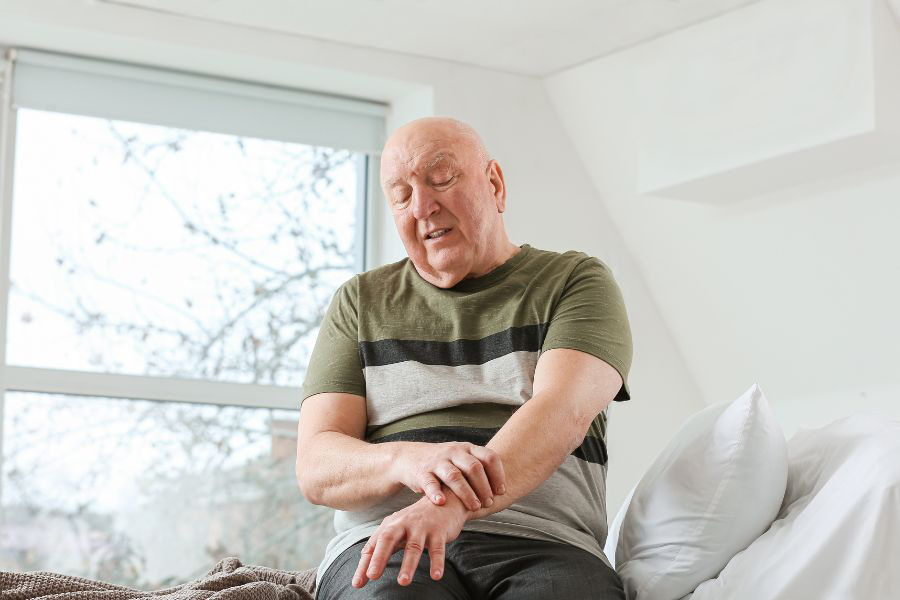Receiving a diagnosis of Parkinson’s disease can be overwhelming—for both the individual and their loved ones. One of the most common and emotional questions families ask is:
“How long can someone live with Parkinson’s disease?”
While Parkinson’s is a chronic, progressive condition, many people live full, meaningful lives for many years after diagnosis. In this article, we’ll walk you through what affects life expectancy, how Parkinson’s progresses, and what families can do to improve quality of life.
What Is Parkinson’s Disease?
Parkinson’s disease is a neurological disorder that primarily affects movement. It develops when nerve cells in the brain that produce dopamine begin to break down or die. This leads to symptoms like:
- Tremors or shaking
- Slowed movements
- Muscle stiffness
- Balance and coordination issues
- Speech and swallowing difficulties
- Mood and sleep disturbances
It’s a progressive disease, which means symptoms typically get worse over time. However, the progression can be different for each person.
So, How Long Can Someone Live with Parkinson’s?
Average Life Expectancy
According to the Parkinson’s Foundation and several medical studies, the average life expectancy for someone with Parkinson’s disease is only slightly less than the general population—especially if diagnosed after age 60.
Many people live 15–20+ years after diagnosis, and some live much longer, particularly if they respond well to treatment and maintain a healthy lifestyle.
Factors That Affect Life Expectancy with Parkinson’s
Every person’s journey with Parkinson’s is unique, but several factors can influence how long someone may live with the condition:
Age at Diagnosis
People diagnosed after age 60 often live well into their 70s or 80s. A younger diagnosis may result in a longer timeline with more years of symptom management.
Type and Progression of Parkinson’s
There are different forms of Parkinson’s, some of which progress more slowly than others. Some people experience more motor symptoms (like tremors), while others may develop non-motor symptoms (like dementia) earlier.
Response to Treatment
Medications like levodopa and newer therapies can dramatically improve quality of life and independence, especially in the earlier stages.
General Health and Comorbidities
Other health conditions—such as heart disease, diabetes, or stroke—can impact longevity more than Parkinson’s itself.
Risk of Falls and Complications
As balance and mobility decline, falls and infections (like pneumonia) become serious risks. These complications, rather than Parkinson’s directly, are often the cause of life-threatening events.
What Are the Stages of Parkinson’s Disease?
Parkinson’s disease is typically categorized into five stages using the Hoehn and Yahr scale. These stages help caregivers and medical professionals understand how the condition is progressing and what level of support may be needed.
Stage 1 – Mild Symptoms (Usually on One Side)
In this early stage, symptoms like tremors, slight stiffness, or changes in facial expression may appear—but usually only on one side of the body. Most people can still perform all daily tasks independently.
Stage 2 – Symptoms on Both Sides of the Body
Symptoms such as tremors or rigidity begin affecting both sides. Tasks may take longer, but independence is generally maintained. This is the most commonly diagnosed stage.
Stage 3 – Balance Issues and Falls Begin
This stage marks the onset of balance problems, making falls more likely. Movements become slower, and activities like dressing or cooking may require extra time or assistance.
Stage 4 – Advanced Symptoms and Daily Assistance Needed
People in this stage often need help walking or performing basic tasks. Living alone becomes difficult and professional, or family caregiving support is often needed.
Stage 5 – Full-Time Care Required
At this most advanced stage, individuals are typically wheelchair-bound or bedridden. They need around-the-clock care due to extreme difficulty with mobility and increased risk of complications like infections.
Can You Still Live a Good Life with Parkinson’s Disease?
Yes, absolutely. While Parkinson’s disease presents ongoing challenges, many individuals continue to lead fulfilling and meaningful lives—even years after diagnosis.
People living with Parkinson’s often continue to:
- Work or volunteer
- Travel and explore
- Spend quality time with family and friends
- Enjoy hobbies and daily routines
The key is to proactively manage the condition and adapt as needs change. A strong support system, treatment plan, and a positive mindset can make a big difference.
What Can Improve Quality of Life for Someone with Parkinson’s Disease?
Living with Parkinson’s can be challenging, but there are many ways to improve comfort, safety, and emotional well-being. From physical therapy to emotional support, the right care plan can help someone with Parkinson’s maintain independence and joy in their daily life.
Can Medications and Physical Therapy Help?
Yes. Parkinson’s medications help manage symptoms like tremors and stiffness, while physical therapy improves balance, strength, and mobility—key for staying active and independent.
How Important Is a Healthy Diet and Exercise?
Very. A brain-healthy diet and regular, gentle exercise like walking or yoga can boost mood, reduce rigidity, and support overall brain health—all essential in managing Parkinson’s long-term.
What Role Does Emotional Support Play?
A major one. Depression and anxiety are common with Parkinson’s. Talking to a counselor or joining a support group can help individuals feel heard, understood, and less isolated.
When Should Home Care Be Considered?
When daily tasks become more difficult, in-home caregivers can provide vital support—helping with bathing, dressing, medication reminders, mobility, and fall prevention. Even part-time care can make a big difference.
How Can Fall Prevention and Home Changes Help?
Simple home modifications like grab bars, non-slip mats, and better lighting can dramatically reduce the risk of falls, one of the leading causes of injury in people with Parkinson’s.
Final Thoughts: A Diagnosis Doesn’t Define a Life
A Parkinson’s diagnosis is not the end—it’s a new chapter. With the right care, resources, and support, many people live for decades with the condition. Staying informed, proactive, and emotionally supported makes all the difference.
If someone you love has been diagnosed with Parkinson’s disease and you’re not sure what steps to take next, we’re here to help.
FAQ: Life Expectancy and Parkinson’s Disease
What is the average age of death with Parkinson’s?
Many people live into their late 70s or 80s with Parkinson’s. Life expectancy is often influenced more by other health conditions than Parkinson’s itself.
How fast does Parkinson’s progress?
Progression varies by person. Some experience mild symptoms for 10+ years, while others may decline more quickly. A healthy lifestyle and proper treatment can slow progression.
Can someone with Parkinson’s live alone?
Yes, especially in the early stages. As mobility or memory declines, home care or assisted living may become necessary for safety.

